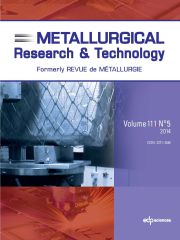Article contents
Cadmium flows in Europe
Published online by Cambridge University Press: 08 December 2009
Abstract
A Material Flow Analysis (MFA) of cadmium for Europe (EU 27)is described in this paper. In general the purpose of this MFA is toprovide a reliable set of time series data on the flows and stocks ofcadmium as they pass through the European economy. For the data on cadmium flows in Europe various sources,statistics and surveys were taken into account. Data on importand export statistics, production and consumption of cadmiumuse, hidden flows of cadmium, the recovery and recycling ofcadmium, especially batteries, as well as disposal and losses wereconsidered. The study includes the whole life cycle of cadmium, startingfrom the raw material extraction, which is the basis for the metalproduction. Cadmium, as it is produced as a by-product of thezinc, lead and copper refinery, is further treated throughoutvarious processes. Within the production and manufacturing,pre-consumer scrap is returned directly to the main productionprocess. Afterwards the cadmium is used within various products,e.g. batteries. After the use phase, having reached the end-of-lifewithin a specific application field, cadmium is recycled. What is notcollected for recycling or returned to the recycling system, is lost inthe environment. Finally, during the recycling process, cadmium isreturned to the cadmium cycle as post-consumer scrap and whatcould not be recycled is disposed. One important outcome of the MFA of cadmium was the gainedknowledge on available data and data sources within thecadmium industry. In particular, the inconsistency between thedata sources became obvious. Nevertheless a comprehensivesystem was established which summarizes the cadmium flowsin Europe and set up a MFA model as well as the linkages toavailable data sources of the cadmium industry. In addition tothe data management system, the data gaps of relevance wereidentified to support future activities in this field.
- Type
- Research Article
- Information
- Copyright
- © La Revue de Métallurgie, 2009
- 3
- Cited by


